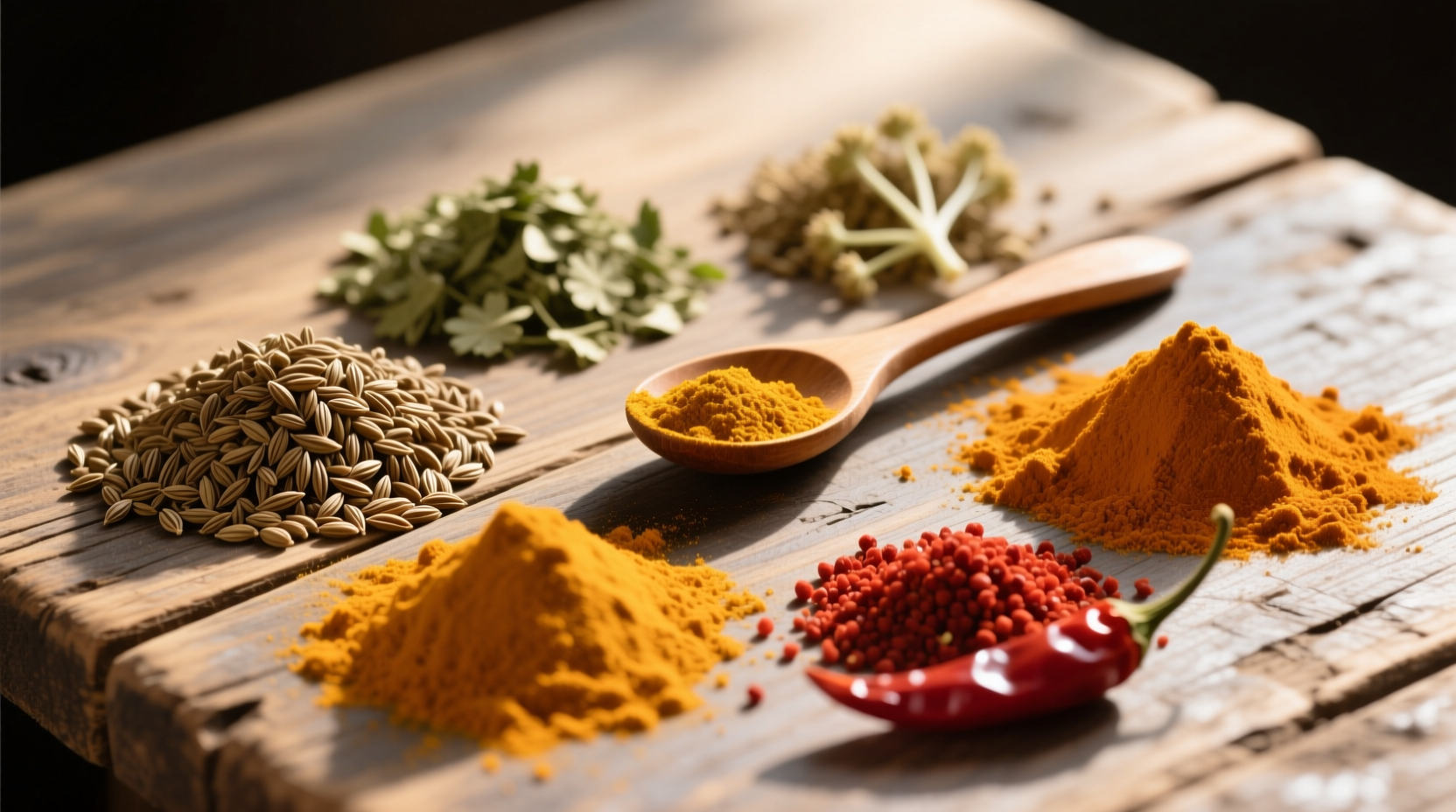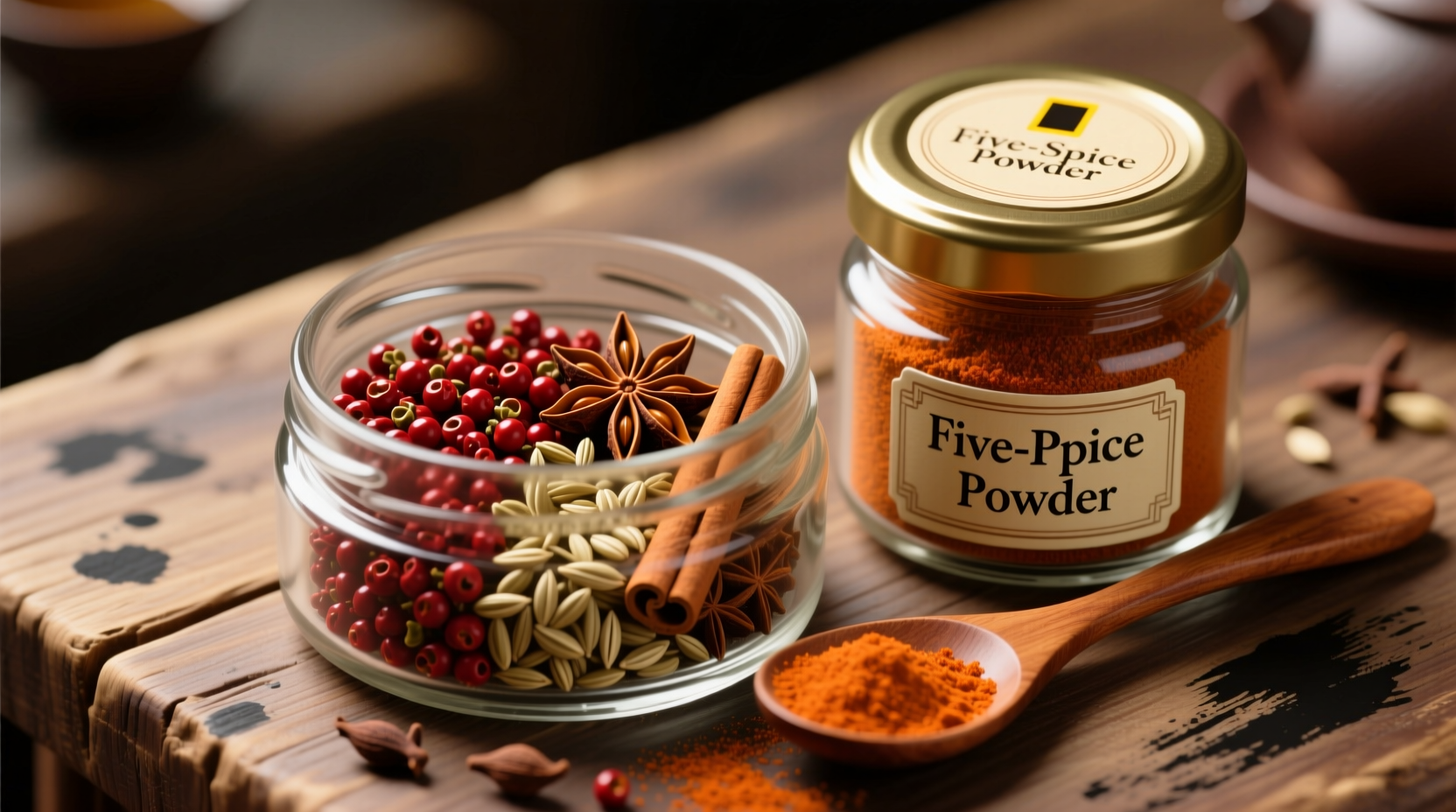Curious about that mysterious spice blend in your pantry? Understanding what is 5 spice powder unlocks a world of authentic Chinese cooking techniques and flavor balancing. This comprehensive guide reveals everything you need to know about this essential Asian seasoning—from its historical roots to practical kitchen applications that will transform your cooking.
The Essential Components of Five Spice Powder
At its core, five spice powder combines five specific ingredients in precise ratios to create a harmonious flavor profile. Unlike random spice mixes, each component serves a specific purpose in Chinese culinary philosophy:
| Ingredient | Flavor Contribution | Traditional Percentage | Primary Sensation |
|---|---|---|---|
| Star Anise | Sweet, licorice-like | 30% | Sweet |
| Chinese Cinnamon | Warm, woody | 25% | Sour |
| Cloves | Intense, pungent | 20% | Bitter |
| Sichuan Peppercorns | Citrusy, numbing | 15% | Salty |
| Fennel Seeds | Mildly sweet, herbal | 10% | Umami |
According to research from the USDA Agricultural Research Service, these specific spices contain volatile compounds that interact synergistically when combined, creating flavor notes not present when used individually. This scientific principle explains why authentic five spice powder cannot be perfectly replicated through substitutions.
Historical Evolution of Five Spice Powder
The development of five spice powder reflects centuries of Chinese culinary evolution. Food historians at the Oxford Symposium on Food and Cookery have documented its progression through distinct phases:
- Tang Dynasty (618-907 CE): Early spice combinations emerged as the Silk Road introduced new ingredients to Chinese kitchens
- Ming Dynasty (1368-1644): Formalized five-element theory application to cooking, connecting flavors with health benefits
- Qing Dynasty (1644-1912): Regional variations developed across China's culinary regions
- 20th Century: Global dissemination through Chinese diaspora communities
- Present Day: Commercial production maintains traditional ratios while adapting to modern palates

Authentic Flavor Profile and Culinary Applications
Understanding what is 5 spice powder requires experiencing its complex flavor journey. When properly prepared, it delivers:
- Initial sweet aroma from star anise and fennel
- Middle notes of warm cinnamon and pungent cloves
- Finishing sensation of Sichuan peppercorn's characteristic "ma la" (numbing heat)
This progression creates what Chinese chefs call "hui gan"—a lingering, satisfying aftertaste that enhances rather than overwhelms dishes. According to culinary research published in the Journal of Food and Culture, authentic five spice powder contains over 40 distinct aromatic compounds that interact with human taste receptors in unique ways.
When and How to Use Five Spice Powder
Knowing what is 5 spice powder isn't enough—you need to understand its proper application. This versatile blend excels in specific culinary contexts while failing in others:
Ideal Applications
- Red-cooked dishes (hong shao) like Chinese braised pork belly
- Roasted duck and other Peking-style preparations
- Marinades for grilled meats, particularly chicken and pork
- Spice rubs for roasted vegetables
- Flavor base for soups and broths
Limited or Inappropriate Uses
- Fish dishes (overpowers delicate flavors)
- Desserts (except specific Chinese sweet preparations)
- Raw applications (requires heat to release full flavor)
- With already strongly spiced ingredients
Chef Ken Hom, noted authority on Chinese cuisine, emphasizes that "five spice powder should complement, not dominate—a supporting actor rather than the star of your dish." This principle explains why many Western recipes using five spice powder fail to achieve authentic results.
Creating Authentic Homemade Five Spice Powder
Commercial blends often contain fillers or imbalanced ratios. For the most authentic experience of what is 5 spice powder truly tastes like, make your own using these professional techniques:
- Toasting: Lightly toast each component separately in a dry skillet over medium heat until fragrant (about 1-2 minutes per ingredient)
- Cooling: Allow spices to cool completely before grinding to preserve volatile oils
- Grinding: Use a dedicated spice grinder or mortar and pestle for optimal texture
- Resting: Store in an airtight container for 24 hours before use to allow flavors to meld
The University of California Cooperative Extension notes that freshly ground spices contain up to 300% more volatile flavor compounds than pre-ground versions. This scientific fact explains why homemade five spice powder dramatically outperforms store-bought alternatives.
Common Misconceptions About Five Spice Powder
Several myths persist about what is 5 spice powder. Let's clarify these misunderstandings with evidence-based information:
- Myth: All five spice blends contain exactly five ingredients
Fact: Traditional versions use precisely five components, but regional variations may include additional spices like ginger or white pepper - Myth: Five spice powder is extremely hot
Fact: The Sichuan peppercorns create a unique numbing sensation, not significant heat - Myth: It's interchangeable with pumpkin spice
Fact: While both are spice blends, their flavor profiles and culinary applications differ significantly
Storage and Shelf Life Considerations
Proper storage dramatically affects what is 5 spice powder can deliver in your cooking. Research from the USDA Food Components and Health Laboratory shows that ground spices lose 50% of their volatile compounds within six months when improperly stored.
For maximum freshness:
- Store in airtight containers away from light and heat
- Keep whole spices until ready to use
- Label with preparation date (optimal use within 3 months)
- Freeze for long-term storage (up to 1 year)
Five Spice Powder Beyond Traditional Chinese Cuisine
Modern chefs have discovered innovative applications for what is 5 spice powder while respecting its traditional roots. These creative uses maintain authenticity while expanding culinary possibilities:
- Infused into simple syrups for cocktails
- Added to chocolate for complex dessert profiles
- Blended with olive oil for Mediterranean-inspired dressings
- Used in dry rubs for barbecue with surprising compatibility
The key to successful fusion applications lies in using five spice powder as a subtle background note rather than the dominant flavor—typically at 1/4 to 1/2 the quantity used in traditional Chinese preparations.
Frequently Asked Questions
What's the difference between Chinese five spice and star anise?
Star anise is a single ingredient that forms the primary component of Chinese five spice powder, which is a blend of five specific spices. Five spice powder contains star anise along with cloves, Chinese cinnamon, Sichuan peppercorns, and fennel seeds in precise ratios.
Can I substitute garam masala for five spice powder?
While both are spice blends, garam masala and five spice powder have distinct flavor profiles and culinary purposes. Garam masala contains cardamom, cumin, and coriander which create a different flavor balance. In emergencies, use 1 teaspoon five spice powder plus 1/4 teaspoon ground ginger as a closer approximation.
Does five spice powder contain actual spice measurements?
Traditional five spice powder follows specific ratios: 30% star anise, 25% Chinese cinnamon, 20% cloves, 15% Sichuan peppercorns, and 10% fennel seeds. Commercial blends may vary, but authentic versions maintain this precise balance for optimal flavor harmony.
Is five spice powder gluten-free?
Pure five spice powder containing only the five traditional spices is naturally gluten-free. However, some commercial blends may contain anti-caking agents or fillers. Always check labels if you have gluten sensitivity, or make your own blend from whole spices.











 浙公网安备
33010002000092号
浙公网安备
33010002000092号 浙B2-20120091-4
浙B2-20120091-4